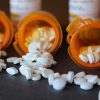Angelina Jolie's announcement that she had both breasts removed- after finding out she had an 87% chance of getting breast cancer due to the BRCA1 gene- has brought much attention to the procedure. Apparently, rates of women opting for preventive mastectomies have increased by an estimated 50 percent in recent years. Since genetic tests for breast cancer risks have
Angelina Jolie's announcement that she had both breasts removed- after finding out she had an 87% chance of getting breast cancer due to the BRCA1 gene- has brought much attention to the procedure. Apparently, rates of women opting for preventive mastectomies have increased by an estimated 50 percent in recent years. Since genetic tests for breast cancer risks have become available, the numbers of women choosing to be tested has increased, too, even though the U.S. Preventive Services Task Force recommends that only women with a strong family history even think about getting a BRCA genetic test– which is only 2 percent of U.S. women. Dr. Todd Tuttle, chief of surgical oncology at the University of Minnesota, says, “I have postulated that one of the downsides of breast cancer awareness is that there is a situation of hyperawareness. Women in the United States are just assuming they are going to get breast cancer." Meanwhile, the actual rate of women developing breast cancer in the U.S. is about 12 percent, and survival rates for breast cancer are 93 percent if it’s caught at the earliest stages and 88 percent at stage 1. Many doctors are puzzled by women's choices, because the mastectomy operation doesn't carry a 100 percent guarantee, it's major surgery with a significant recovery period, and women have other options, from a once-a-day pill to careful monitoring. Still, Jolie's point is that "Life comes with many challenges. The ones that should not scare us are the ones we can take on and take control of."
NBC News, 5/15/2013







Leave a Comment
Your email address will not be published. Required fields are marked with *